A Walk in Harlem
The word Harlem sounds to me like a song and it slips through my lips like that—easy and familiar. I’m often asked if I ever lived in Harlem and the answer is no. I lived in Manhattan’s Upper West Side, about 40 blocks south. But I took the subway north regularly, about every 6-8 weeks, to get my hair done in Harlem. That routine ended years ago. I live in Connecticut now.
Today, though, I have returned to Harlem for a walk. I’m seeking remnants of the seeds that led me to choose it for the setting of my novel Unforgivable Love: A Retelling of Dangerous Liaisons. The book’s story takes place in the 1940s in many locations, from the rural Anselm, North Carolina to the more refined bucolic setting of Westchester County. Paris, France plays a role as well. But the launch pad for the action is in Harlem. When I imagined where my characters lived, where they went to church, and how they entertained themselves, I saw the places as only being in Harlem. A few sources of inspiration are still here today but I know mostly I’ll find only ghosts of what is no longer here.
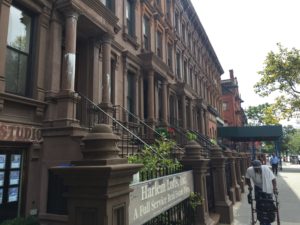
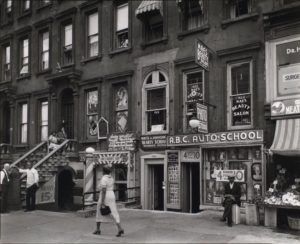
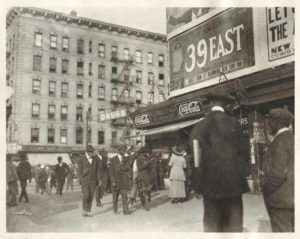
Lenox Avenue, 1940s
Whenever I arrive in Harlem, whether by subway or, as I did today, by minivan, I’m always struck by the scents and how familiar they are. I smell a blend of hair oils, incense, frying food, and a kind of mustiness I can only describe as dust. I grew up in Lorain, Ohio but my childhood home smelled like this too as did the houses of every relative and friends of my parents we visited. This is why I have my character Val Jackson stepping outside on the streets of Harlem and having his senses immediately taken over by smells that strike him with a feeling of home, home, home.
I’m walking down Lenox Avenue, also known as Malcolm X. Boulevard, one of the main thoroughfares of Harlem. The avenues of Harlem are broad, the sidewalks wide. Compared to the narrower, crowded streets of Manhattan neighborhoods to the south, there’s not only room to walk here, there’s room to breathe.
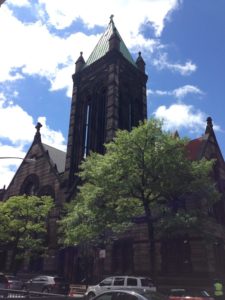 I start at 122nd and Lenox at St. Martin’s Episcopal Church. St. Martin’s, built in 1887-88 in an architectural style called Romanesque Revival, is a striking presence on the corner. It is not as well known as the famous Abyssinian Baptist Church (I’ll come to that later) but when I pictured the inside of Mount Nebo, the church attended by Mae and the other characters, it looked like St. Martin’s. The balcony is not too high and close enough for a person sitting there to see and be seen easily by someone sitting in a central location below. There’s something warm about the design, as though it is embracing the congregation.
I start at 122nd and Lenox at St. Martin’s Episcopal Church. St. Martin’s, built in 1887-88 in an architectural style called Romanesque Revival, is a striking presence on the corner. It is not as well known as the famous Abyssinian Baptist Church (I’ll come to that later) but when I pictured the inside of Mount Nebo, the church attended by Mae and the other characters, it looked like St. Martin’s. The balcony is not too high and close enough for a person sitting there to see and be seen easily by someone sitting in a central location below. There’s something warm about the design, as though it is embracing the congregation.
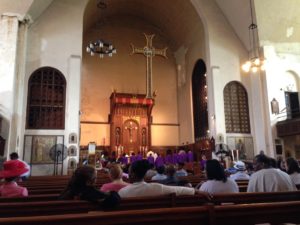
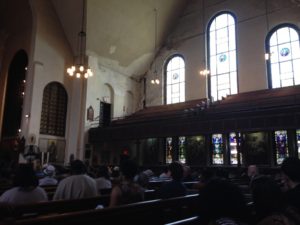
Making my way north on Lenox Avenue I pass Red Rooster, a restaurant celebrating the roots of American cuisine as channeled by famed chef Marcus Samuelsson. I recommend the catfish sandwich, served with the spicy tang of jerk mayo. You can find a mix of live music here as well as in its sister venue downstairs, Ginny’s Supper Club. The elegant club was designed, as its website explains, “with a hat tipped to Harlem’s Renaissance…a modern reincarnation of the glamorous speakeasies and Harlem nights of the Twenties.”
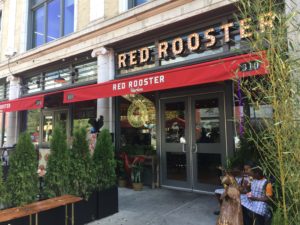
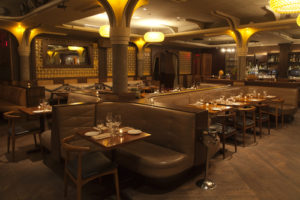
 Just a few blocks more I come upon Sylvia’s Restaurant. Owner Sylvia Woods was known as the “Queen of Soul Food.” She founded this Harlem mainstay in 1962. She passed away a few years ago but her family continues to run the business. “Our main ingredient is love,” Sylvia’s granddaughter, Tren’Ness Woods-Black, said in a recent interview. “Our fried chicken is iconic… the way we even flour our chicken—it’s like magical.” I agree with her! Also on the menu: shrimp (grilled, fried, or barb-b-que), sautéed chicken livers, and beef short ribs prepared in Sylvia’s Secret Brown Gravy.
Just a few blocks more I come upon Sylvia’s Restaurant. Owner Sylvia Woods was known as the “Queen of Soul Food.” She founded this Harlem mainstay in 1962. She passed away a few years ago but her family continues to run the business. “Our main ingredient is love,” Sylvia’s granddaughter, Tren’Ness Woods-Black, said in a recent interview. “Our fried chicken is iconic… the way we even flour our chicken—it’s like magical.” I agree with her! Also on the menu: shrimp (grilled, fried, or barb-b-que), sautéed chicken livers, and beef short ribs prepared in Sylvia’s Secret Brown Gravy.
The street teems with life. Groups of teens and preteens in school uniforms laugh and tease each other. Street vendors offer colorful dresses, scarves, and jewelry. A guy sitting on the sidewalk has a large speaker lofting rhythm and blues music out into the air. A singer croons I love you, I love you, I love you over and over again.
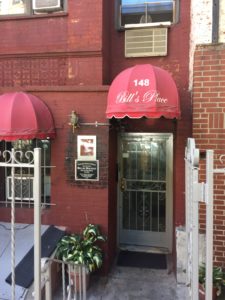
 I make a left at West 133rd and go in search of Bill’s Place, a renown jazz establishment. The large flashy jazz clubs of the past like the famed Cotton Club are long gone but smaller venues like Bill’s Place have had a recent revival. The brownstone housing Bill’s Place was once a speakeasy in the early 1920s. Billie Holiday got her start there and Fats Waller was a regular as well, tickling the ivories for a delighted audience. These days co-founder Bill Saxton, a seasoned saxophone player known as Harlem’s Jazz King, can be heard Friday nights jamming with the best musicians around.
I make a left at West 133rd and go in search of Bill’s Place, a renown jazz establishment. The large flashy jazz clubs of the past like the famed Cotton Club are long gone but smaller venues like Bill’s Place have had a recent revival. The brownstone housing Bill’s Place was once a speakeasy in the early 1920s. Billie Holiday got her start there and Fats Waller was a regular as well, tickling the ivories for a delighted audience. These days co-founder Bill Saxton, a seasoned saxophone player known as Harlem’s Jazz King, can be heard Friday nights jamming with the best musicians around.
I take a right and go north on Adam Clayton Powell Boulevard. A man and his toddler daughter cross the street in front of me. They are reminiscent of the pair my character Val Jackson encounters later in the book while he’s visiting his attorney. Seeing them makes me smile.
At West 138th Street I make another left and I come to the block known as Strivers Row (the homes on West 139th are also included in this noted neighborhood). This area served as my inspiration for the home of hair product heiress Mae Malveaux. Construction on the buildings began in the late 1800s, a project of a wealthy developer named David H. King.
The popular architect Stanford White of McKim Mead and White designed the homes along with a team of other hotshot architects: Bruce Price, Clarence Luce, and James Lord Brown. White designed the northernmost rowhouses on 139th Street in Italian Renaissance style brick and brownstone. Price and Luce designed the other side of the street and the north side of 138th Street in Federal Renaissance-style yellow and buff color brick. Lord chose a Georgian influenced red brick and brownstone mix for the south side of 138th.
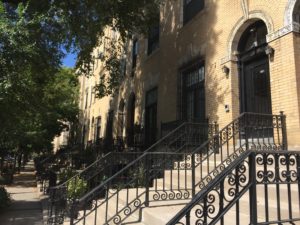
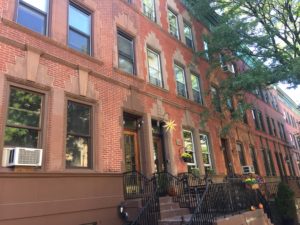
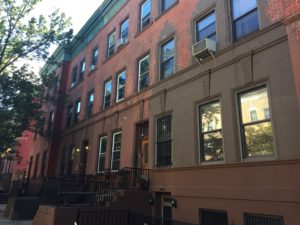
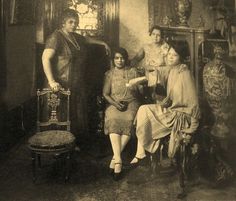
King meant the area to be a haven for the wealthy but the homes failed to sell. Many sat vacant. But black residents weren’t allowed to buy in the neighborhood until the 1920s. At that point white residents were abandoning Harlem. That’s when the name Striver’s Row came into vogue. I found online an image of these fabulous Strivers Row ladies from the 1940s.
There’s a realtor sign on one of the buildings. I gave up the possibility of living in a brownstone long ago but I admit such signs still tempt me to daydream.
 I walk back to Adam Clayton Powell Boulevard, cross it, and arrive at the Abyssinian Baptist Church. This is the granddaddy of Harlem churches. During the 1940s the flock, ministered by Rev. Adam Clayton Powell Jr., grew to 10,000 making Abyssinian, according to the church’s website, “one of the largest and most influential black churches in America and one of the largest Protestant churches in the world.”
I walk back to Adam Clayton Powell Boulevard, cross it, and arrive at the Abyssinian Baptist Church. This is the granddaddy of Harlem churches. During the 1940s the flock, ministered by Rev. Adam Clayton Powell Jr., grew to 10,000 making Abyssinian, according to the church’s website, “one of the largest and most influential black churches in America and one of the largest Protestant churches in the world.”
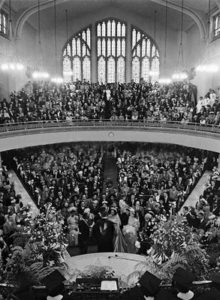 While this is definitely the spirit of the church I created for Mount Nebo Baptist in Unforgivable Love, Abyssinian’s physical size and design were a little too big for me. Check out this image from the 1947 wedding of singer Nat King Cole to his bride Maria. It’s hard to even know where to look and it seemed it might be hard for my characters to notice each other in such a space. But it’s certainly grand!
While this is definitely the spirit of the church I created for Mount Nebo Baptist in Unforgivable Love, Abyssinian’s physical size and design were a little too big for me. Check out this image from the 1947 wedding of singer Nat King Cole to his bride Maria. It’s hard to even know where to look and it seemed it might be hard for my characters to notice each other in such a space. But it’s certainly grand!
Continuing east on West 138th Street I return to Lenox, make a left and walk uptown on the east side of the avenue. In a few blocks I come to a marker noting the spot where the Savoy Ballroom once stood. This raucous public dance space enjoyed its peak in the 1940s. It inspired the Diamond, Val Jackson’s club in my novel. The fact that the Savoy was crowded with people from all walks of life made me think about how a character like Mae Malveaux wouldn’t be caught dead in such a place. That led me to create the Swan, a more refined setting for Mae and her cohort.
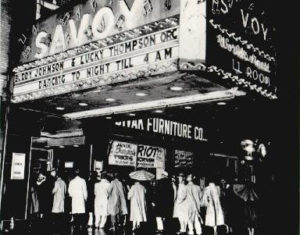
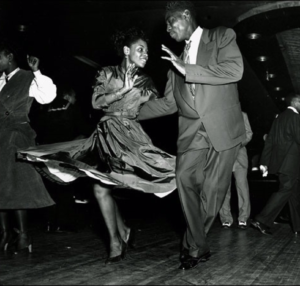
The marker for the Savoy Ballroom is placed at the entrance of the apartment complex, Savoy Park, that now resides on the property. Something about the plaque makes me sad for the loss of the institution and for the music and the footsteps of its happy dancers. But as I turn south again I catch once more the scent of delicious food, and the hunger it inspires makes me feel the promise of everything Harlem is now. I go in search of sustenance, the bright noonday sun beaming down on my face.
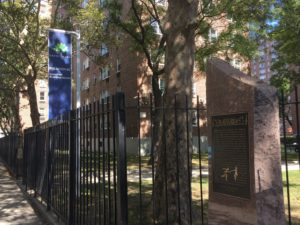



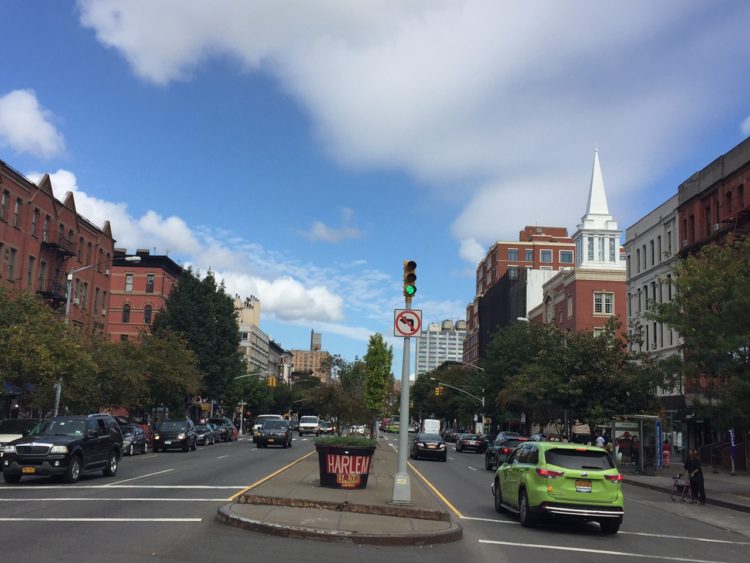
 I start at 122nd and Lenox at St. Martin’s Episcopal Church. St. Martin’s, built in 1887-88 in an architectural style called Romanesque Revival, is a striking presence on the corner. It is not as well known as the famous Abyssinian Baptist Church (I’ll come to that later) but when I pictured the inside of Mount Nebo, the church attended by Mae and the other characters, it looked like St. Martin’s. The balcony is not too high and close enough for a person sitting there to see and be seen easily by someone sitting in a central location below. There’s something warm about the design, as though it is embracing the congregation.
I start at 122nd and Lenox at St. Martin’s Episcopal Church. St. Martin’s, built in 1887-88 in an architectural style called Romanesque Revival, is a striking presence on the corner. It is not as well known as the famous Abyssinian Baptist Church (I’ll come to that later) but when I pictured the inside of Mount Nebo, the church attended by Mae and the other characters, it looked like St. Martin’s. The balcony is not too high and close enough for a person sitting there to see and be seen easily by someone sitting in a central location below. There’s something warm about the design, as though it is embracing the congregation.



 Just a few blocks more I come upon Sylvia’s Restaurant. Owner Sylvia Woods was known as the “Queen of Soul Food.” She founded this Harlem mainstay in 1962. She passed away a few years ago but her family continues to run the business. “Our main ingredient is love,” Sylvia’s granddaughter, Tren’Ness Woods-Black, said in a recent interview. “Our fried chicken is iconic… the way we even flour our chicken—it’s like magical.” I agree with her! Also on the menu: shrimp (grilled, fried, or barb-b-que), sautéed chicken livers, and beef short ribs prepared in Sylvia’s Secret Brown Gravy.
Just a few blocks more I come upon Sylvia’s Restaurant. Owner Sylvia Woods was known as the “Queen of Soul Food.” She founded this Harlem mainstay in 1962. She passed away a few years ago but her family continues to run the business. “Our main ingredient is love,” Sylvia’s granddaughter, Tren’Ness Woods-Black, said in a recent interview. “Our fried chicken is iconic… the way we even flour our chicken—it’s like magical.” I agree with her! Also on the menu: shrimp (grilled, fried, or barb-b-que), sautéed chicken livers, and beef short ribs prepared in Sylvia’s Secret Brown Gravy.
 I make a left at West 133rd and go in search of Bill’s Place, a renown jazz establishment. The large flashy jazz clubs of the past like the famed Cotton Club are long gone but smaller venues like Bill’s Place have had a recent revival. The brownstone housing Bill’s Place was once a speakeasy in the early 1920s. Billie Holiday got her start there and Fats Waller was a regular as well, tickling the ivories for a delighted audience. These days co-founder Bill Saxton, a seasoned saxophone player known as Harlem’s Jazz King, can be heard Friday nights jamming with the best musicians around.
I make a left at West 133rd and go in search of Bill’s Place, a renown jazz establishment. The large flashy jazz clubs of the past like the famed Cotton Club are long gone but smaller venues like Bill’s Place have had a recent revival. The brownstone housing Bill’s Place was once a speakeasy in the early 1920s. Billie Holiday got her start there and Fats Waller was a regular as well, tickling the ivories for a delighted audience. These days co-founder Bill Saxton, a seasoned saxophone player known as Harlem’s Jazz King, can be heard Friday nights jamming with the best musicians around.



 I walk back to Adam Clayton Powell Boulevard, cross it, and arrive at the Abyssinian Baptist Church. This is the granddaddy of Harlem churches. During the 1940s the flock, ministered by Rev. Adam Clayton Powell Jr., grew to 10,000 making Abyssinian, according to the church’s website, “one of the largest and most influential black churches in America and one of the largest Protestant churches in the world.”
I walk back to Adam Clayton Powell Boulevard, cross it, and arrive at the Abyssinian Baptist Church. This is the granddaddy of Harlem churches. During the 1940s the flock, ministered by Rev. Adam Clayton Powell Jr., grew to 10,000 making Abyssinian, according to the church’s website, “one of the largest and most influential black churches in America and one of the largest Protestant churches in the world.” While this is definitely the spirit of the church I created for Mount Nebo Baptist in Unforgivable Love, Abyssinian’s physical size and design were a little too big for me. Check out this image from the 1947 wedding of singer Nat King Cole to his bride Maria. It’s hard to even know where to look and it seemed it might be hard for my characters to notice each other in such a space. But it’s certainly grand!
While this is definitely the spirit of the church I created for Mount Nebo Baptist in Unforgivable Love, Abyssinian’s physical size and design were a little too big for me. Check out this image from the 1947 wedding of singer Nat King Cole to his bride Maria. It’s hard to even know where to look and it seemed it might be hard for my characters to notice each other in such a space. But it’s certainly grand!


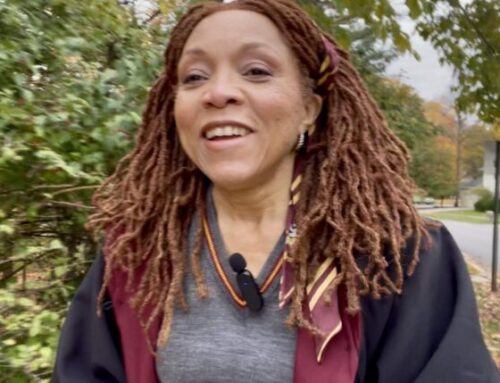
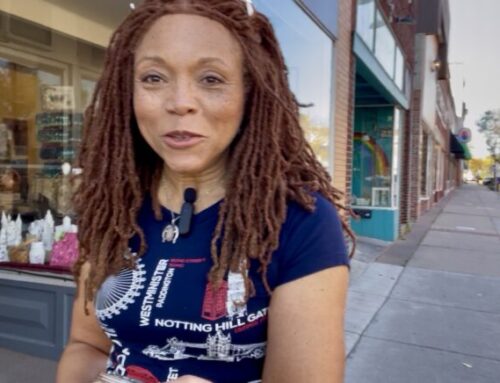
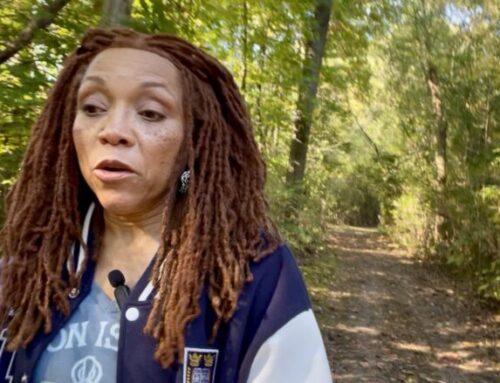
Interesting tour of Harlem. I knew PS 92 well and my mother commuted from Bethel CT for 35 years to work at that school. Her retirement party venue? Cotton Club of course.
Hope to attend Watermark lecture on 2/1/18
That is so cool! Thanks for posting this. Yes, hope to see you in Southbury on the first.